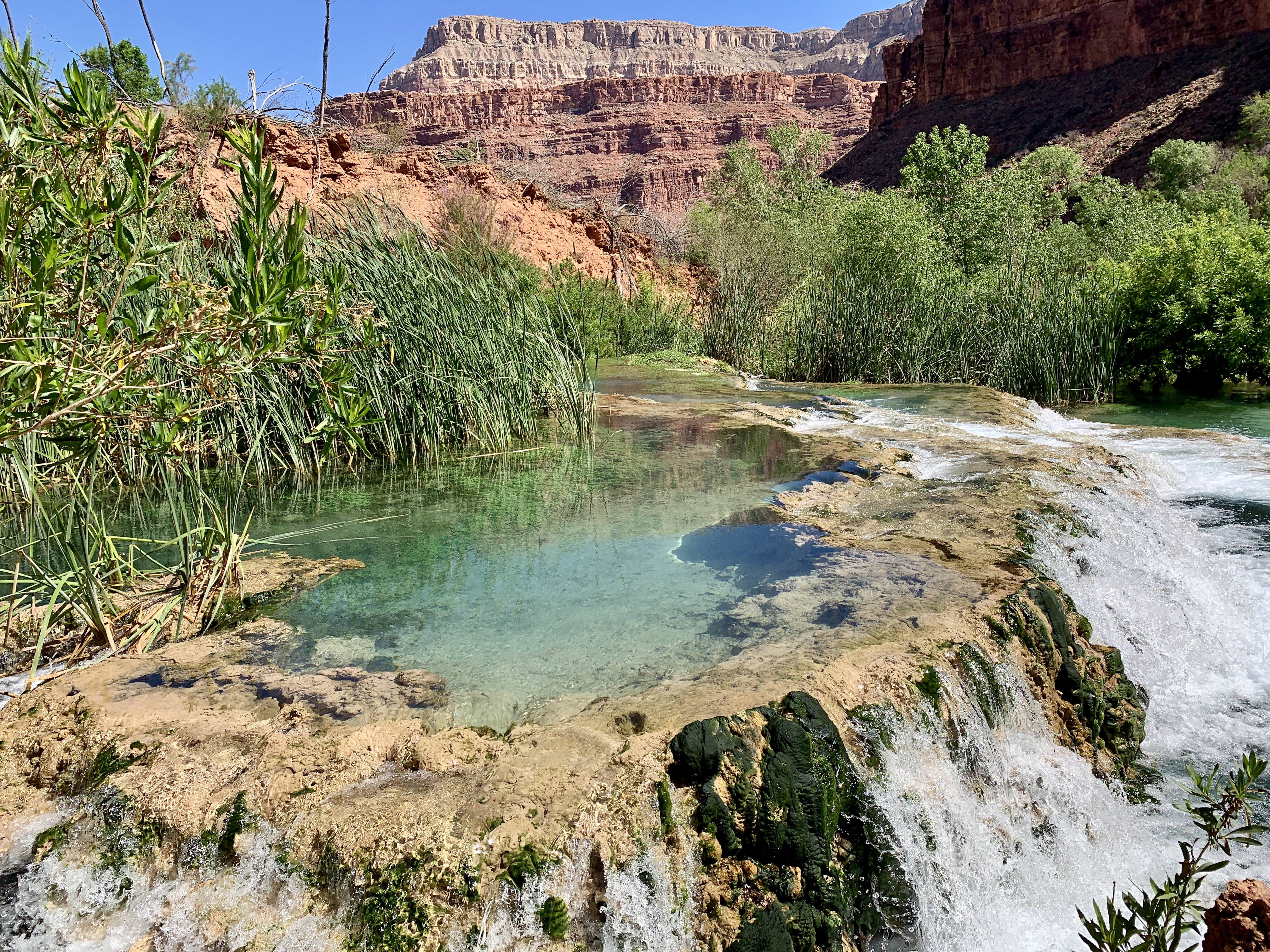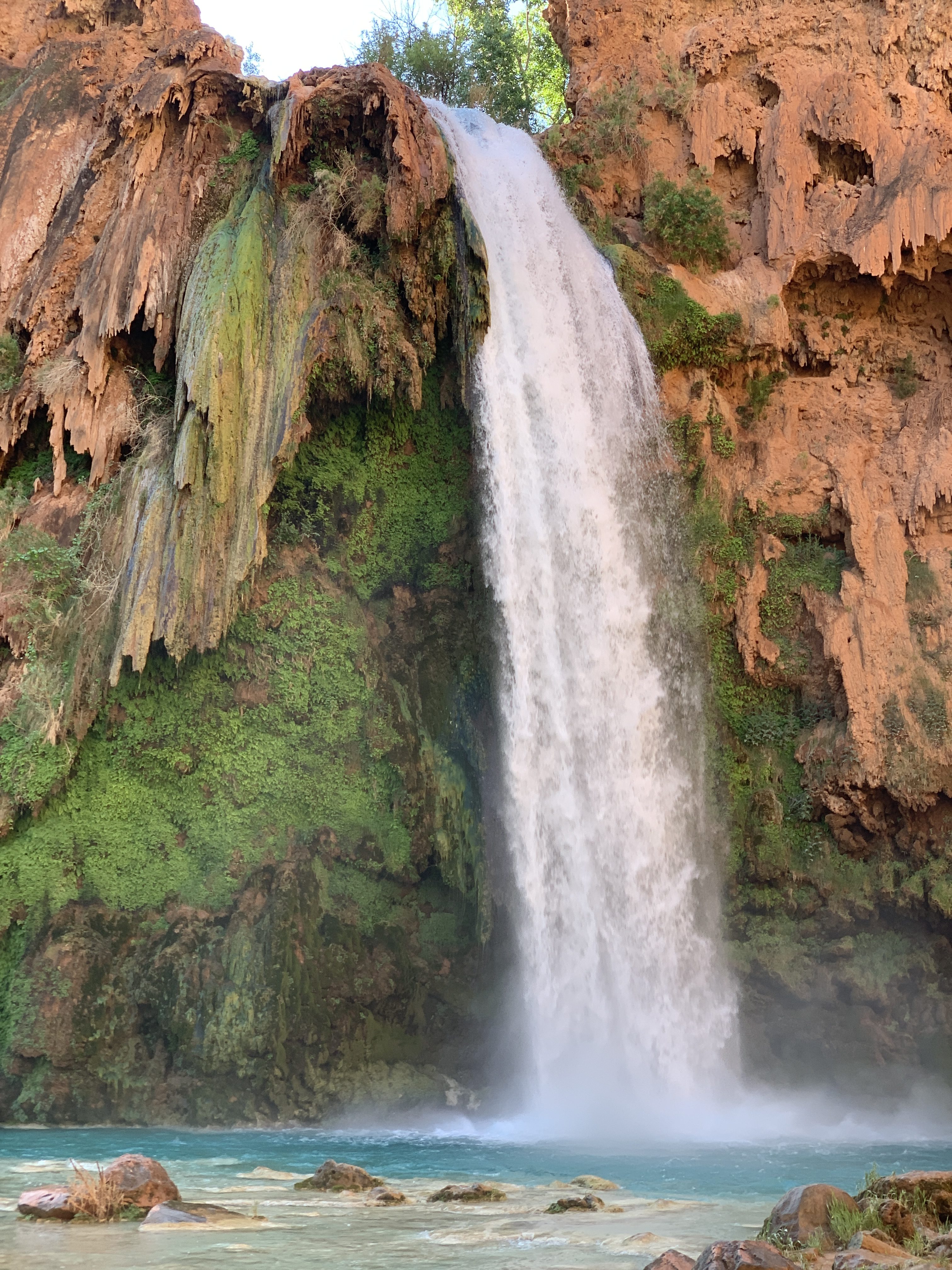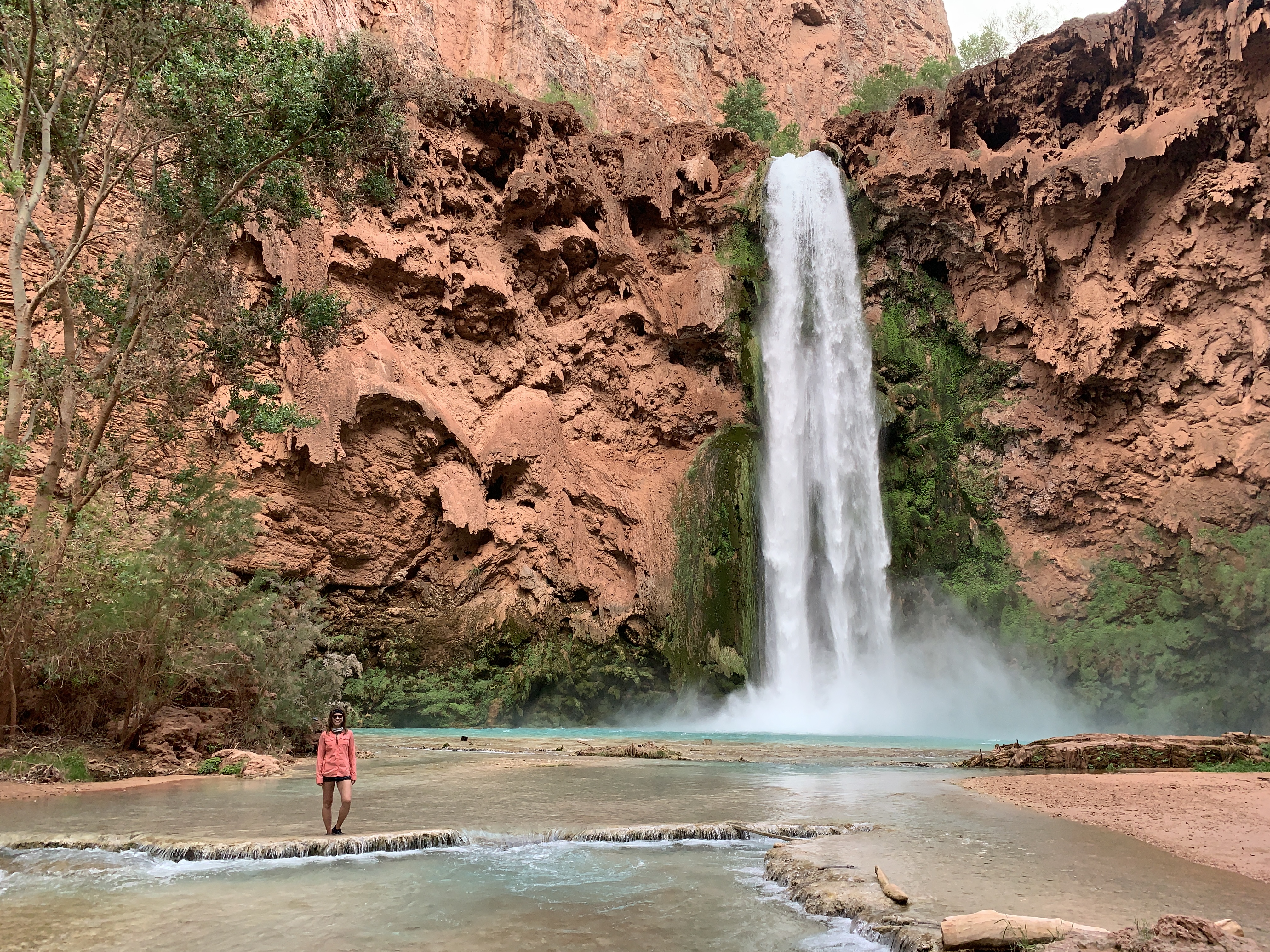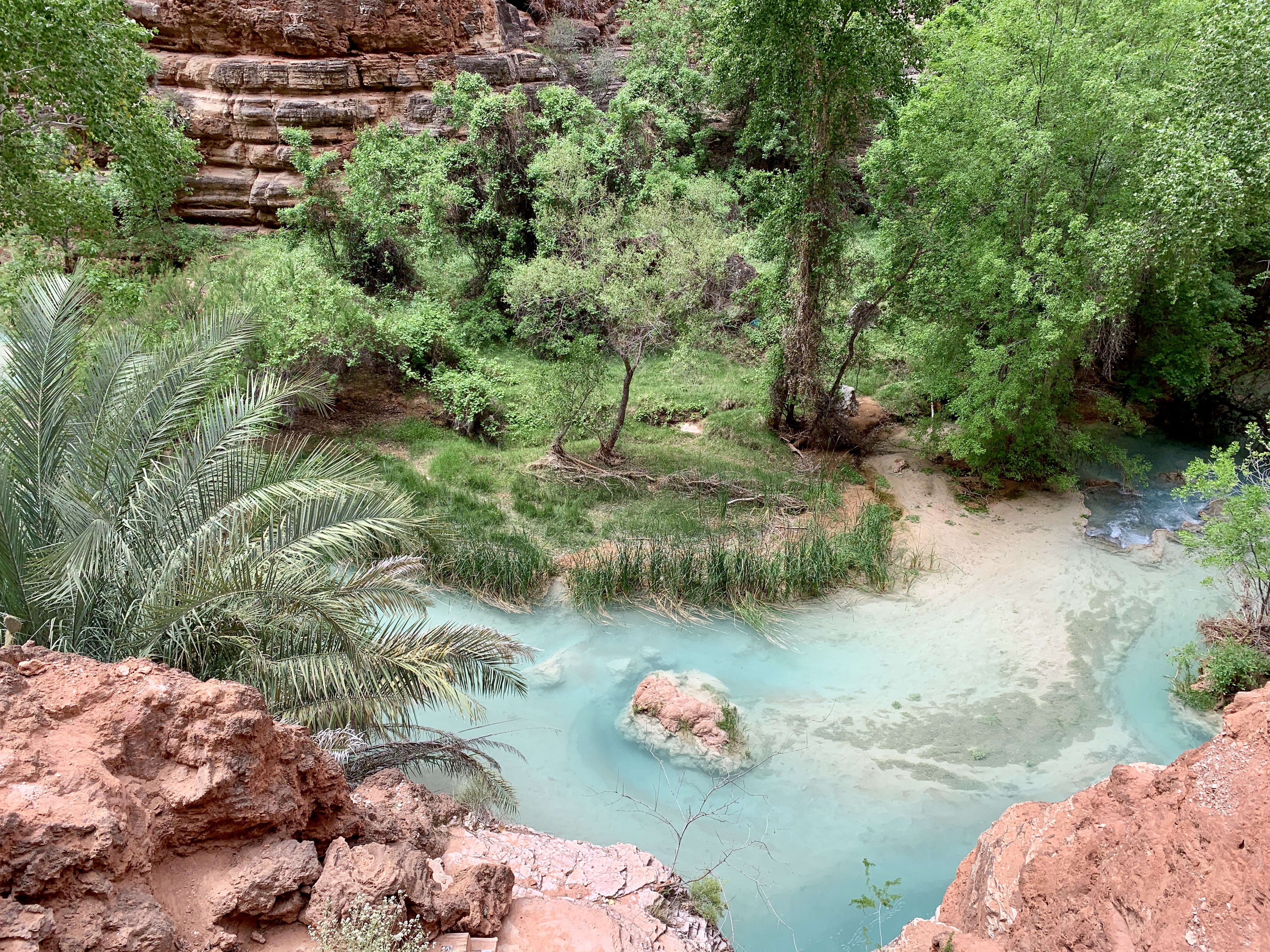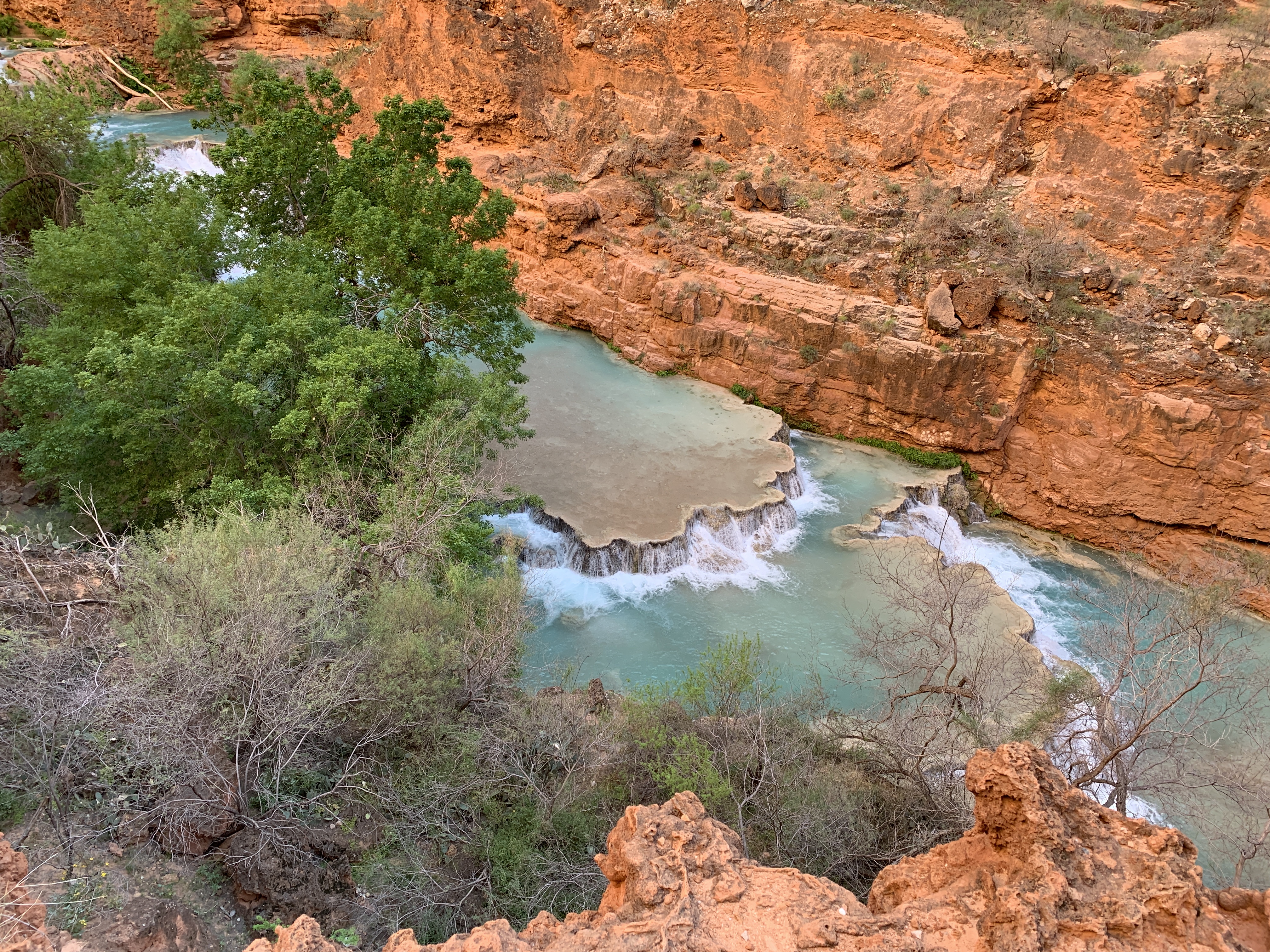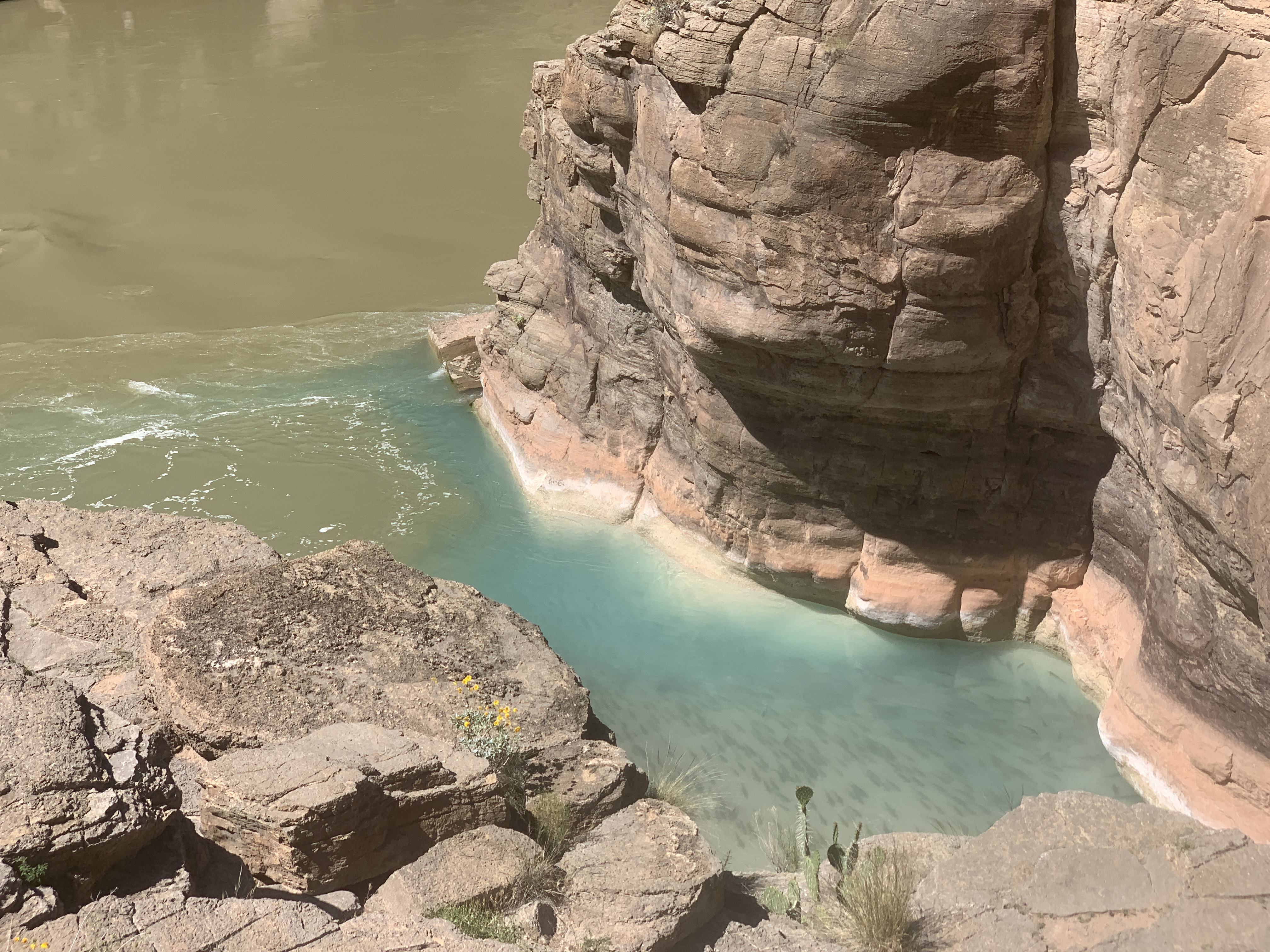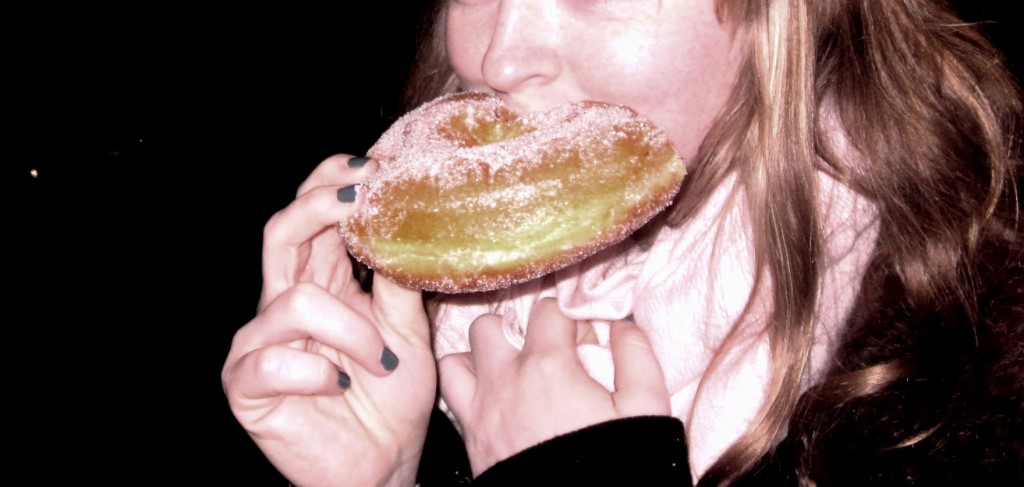Havasu Falls – A Caribbean Oasis in the Grand Canyon
Havasu Falls isn’t easy or cheap to see. To get a permit, you have to register on the site, sign in 60 minutes before the date/time permits go on sale, then power through numerous server errors and issues for 30-60 minutes after reservations go on sale in the hopes that you make it through the system and complete a reservation (you always have to try multiple times because of site errors) before they sell out for the year, which usually happens within 20-60 minutes of them going on sale. Camping permits are $100/person/night for weeknights, and $125/person/night on weekends. Supai is located somewhat near Kingman, AZ on a back side of the Grand Canyon. It’s a 4-hour drive from Vegas, and most people camp overnight in their vehicles at the trailhead the night before their reservation begins. The hike in is 13 miles through the desert (downhill on the way in; uphill on the way out).
Is all this effort worth it? 1000% yes. We are hoping to get a permit every year. It’s one of the coolest things we’ve ever done, and we’d gladly go back again. Below are my tips on visiting this amazing phenomenon nestled within the Grand Canyon.
Key Things to Know:
You have to buy a permit for 3 nights and 4 days. You hike in one day, out the other, and have 2 full days in the canyon.
Nearest town is Kingman, AZ. The nearest larger town to Havasupai Hilltop (the beginning of the trail) is Kingman, AZ, which has an awesome brewery and a few other cool spots.
Stay at the trailhead the night before. Plan to drive to Havasupai Hilltop and spend the night there camping in your vehicle. Then you can start hiking as quickly as possible in the AM to maximize your time in Havasu Falls.
This is not a backcountry backpacking trip. At all. At the 10 mile mark, you’ll hit the town of Supai. Although there are no roads in or out of it, there is 3G cell service, wifi, a small grocery, and a few basic restaurants that sell Native American food. This town is about 1-2 miles from most campsites, so you don’t want to walk there every day, but if anything happens or you run out of food, you certainly won’t die.
Hike don’t use the helicopters or mules. Unless you’re handicapped or terminally ill, if you want to see Havasu, you should train to do the hike in and out. The only hard part of it is carrying your pack, and the last mile on the way out, which climbs 1000 feet in less than 1 mile. However, if you really want to be lazy and cheat yourself of the real experience (as well as harming the natural environment), you can pay $80 to have you and your luggage flown in like a damn princess. You also can pay to make some poor mules carry your shit. Or, you could not take anything you can’t carry. You’re supposed to be backpacking, after all.
The campground is really big and on the river. The campground is 1-2 miles long and nearly all campsites are along Havasu Creek. Walk as far back as you can toward Mooney Falls and find camping sites there. Those are cooler than the front sites, however they’re further away from where you get cell service.

There is cell service and wifi. As I said above, the first waterfall, the town, and everything in between has 3G cell service, and the town has wifi.
The water really is that blue. Photos hardly do this place justice. It looks a professional landscaper built a Caribbean spa in the midst of dramatic red canyons.
The area is huge. There are 5 waterfalls and about 20+ miles of hiking (or more) that you have access to. We spent most of our time in the area beyond Mooney Falls. The hike between Mooney and Beaver is incredible, and there are tons of places to stop and hang out without crowds. We hiked to the Confluence of the Colorado and Havasu Creek. The hike takes most of a day, but is quite worth it.
Layers are your friend. The temperature varies a lot from day to night and in different parts of the canyon. Be sure to pack layers that you can take on and off.
There are toilets and there is plenty of water. There are composting restrooms with toilet paper in the campground. There also is plenty of water (i.e. Havasu Creek). Just bring a filter.
Things will get wet. Bring quick-dry items. Almost everything will get wet. You’re living, playing, hiking, and swimming in a creek all day. Plus sometimes it rains / storms. Bring waterproof bags, tent covers, and quick-dry clothes.
There are 5 big waterfalls, and hundreds of mini-ones. Below are my tips on what to do at and around each:
Navajo Falls
This is the first set of falls you come upon via the trail while hiking into Havasu. We thought these were the best falls for chilling and sun-bathing since they get the most sun, and the water seemed a touch warmer in a few of the outer pools. They also are a bit more chill than the big waterfalls because you aren’t being drenched by a cold mist or fighting big currents while swimming.
Fifty Foot Falls
Although technically the first set of waterfalls, I didn’t see them from the trail, so I consider them the second set. I accessed these by following a little dirt trail off the side of Navajo Falls. Although there isn’t as much area to swim or lounge around these, they are stunning (as is everything at Hasvasu).
Havasu Falls
This is the first big waterfall you come to on the trail, just before reaching the campground. Havasu Falls and Mooney Falls are very similar, however it’s easier to get to Havasu. The canyon walls also have a rainbow shimmer here, which is stunning to see and photograph.
Mooney Falls
We spent most of our time near or beyond Mooney Falls. You have to climb down a wet, worn, somewhat sketchy craggy trail with chains and ladders to get from the top of Mooney Falls (which is the end of the campground area) to the bottom, but it’s not difficult and well-worth the adrenaline rush. Mooney is the other massive waterfall on Havasu Creek. It’s quite powerful and visually-stunning. The constant mist given off by the falls paired with the fact that the area is shaded most of the day (other than morning) makes this area pretty chilly, so I layered up. There are a number of mini falls you can climb around and rope swings you can use in this area.
Trail between Mooney and Beaver Falls
The three mile stretch of river and trail between Mooney Falls and Beaver Falls is arguably the most beautiful area of Havasu Creek. It’s a perfect place to spend a day or more exploring, lounging, and swimming since you can easily find your own little spot with no one else around. There also are numerous areas that look like a rainforest (see photos below).
Beaver Falls
This is the famous terraced set of falls on Havasu Creek. Honestly, they look better in person than anything I could capture with my camera. There’s a ton to do in this area – from lounging casually in the terraces around the waterfalls, to braving the currents and rope ladders to climb up various portions of the cliffs surrounding the falls, to cliff jumping. If you stay at Beaver until 4 or 5 pm, the crowds clear and you have the place largely to yourself, which is breathtaking.
Hike to Confluence Point
If you continue hiking to the end of trail, which is about 6 miles beyond Beaver Falls, you’ll come to the confluence of Havasu Creek and the Colorado River. This was a really fun hike and great way to spend a day. This area isn’t quite as visually stunning as the creek is between the five falls, but it’s really neat to explore a different portion of the Grand Canyon, and a fun adventure. I think it’s a 14-15 mile hike to make it to and from Confluence, so plan on this taking most of a day.


